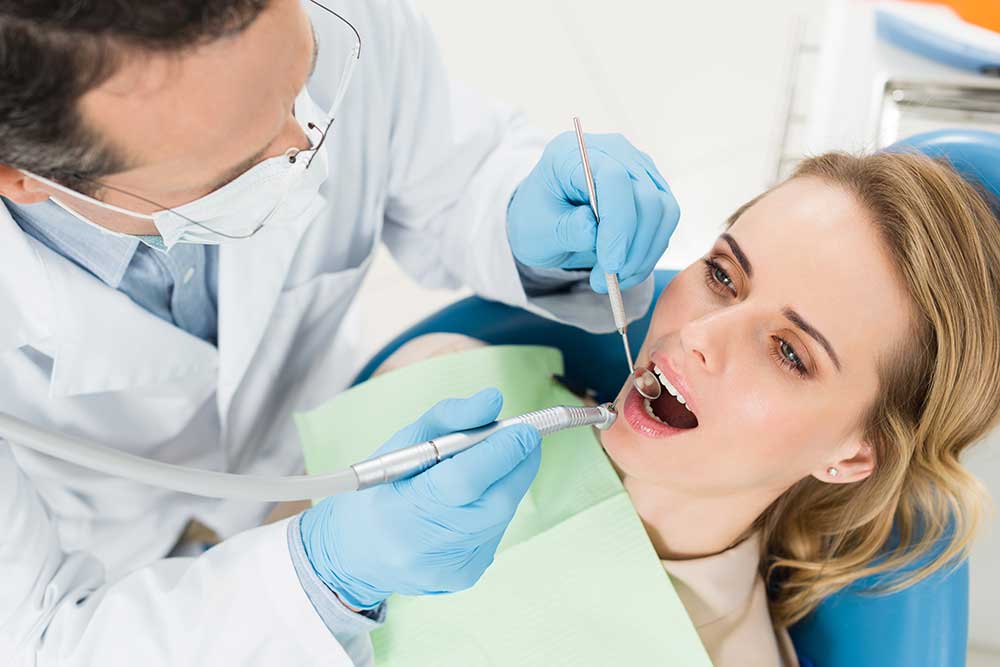
The Benefits of Regenerative Medicine for Aging Skin
Aging skin is a natural part of the human lifecycle, characterized by wrinkles, fine lines, sagging, and loss of elasticity. While these changes are inevitable, advancements in regenerative medicine are offering groundbreaking solutions to rejuvenate and repair the skin, restoring a youthful appearance. Unlike traditional treatments that focus on masking or temporarily alleviating signs of aging, regenerative medicine works at a cellular level to reverse damage, stimulate repair, and promote healthy skin renewal.
What is Regenerative Medicine?
Regenerative medicine focuses on harnessing the body’s natural ability to heal and restore tissues. This innovative field includes therapies such as platelet-rich plasma (PRP), stem cell treatments, and growth factor-based therapies. These procedures utilize biologically active substances derived from the patient’s own body or biocompatible materials to stimulate skin repair, increase collagen production, and improve overall skin quality.
Benefits for Aging Skin
- Stimulates Natural Healing
Regenerative medicine taps into the body’s innate repair mechanisms. Procedures like PRP involve isolating platelets from a patient’s blood and injecting them into the skin to stimulate collagen and elastin production. This not only reduces wrinkles but also improves skin tone and texture. - Long-Lasting Results
Unlike traditional cosmetic treatments such as Botox or fillers, regenerative therapies promote lasting changes by improving the underlying health of the skin. While results may take longer to appear, they are typically more durable as they address the root causes of skin aging. - Minimally Invasive
Most regenerative procedures are non-surgical and require minimal downtime. For instance, microneedling combined with PRP therapy creates micro-injuries to the skin, stimulating repair without extensive recovery periods. This makes regenerative medicine an appealing option for individuals seeking effective results without major disruptions to their lives. - Customizable Solutions
Regenerative treatments can be tailored to individual needs, addressing specific areas of concern like fine lines, sun damage, or scars. This personalized approach ensures more precise and satisfying outcomes. - Enhances Skin Vitality
By encouraging the formation of new blood vessels and skin cells, regenerative medicine improves skin hydration, elasticity, and resilience. The overall effect is healthier, glowing skin that radiates vitality.
How to Get Started with Regenerative Medicine
For those intrigued by the transformative potential of regenerative medicine, consulting with a qualified specialist is the first step. Experts can evaluate your skin’s condition and recommend the most suitable treatment plan.
To learn more about cutting-edge regenerative treatments and find detailed resources on these procedures, visit Regen Labs. This trusted source provides comprehensive information on innovative therapies and their applications, empowering you to make informed decisions about your skin health.
Conclusion
Regenerative medicine offers a revolutionary approach to combating the signs of aging skin. By focusing on the body’s natural ability to heal, these treatments provide a safe, effective, and lasting solution for those looking to maintain youthful, vibrant skin. As research in this field continues to advance, the future of skin rejuvenation looks increasingly promising, giving individuals the tools to age gracefully and confidently.… Read the rest

Common Gun Crimes and Their Legal Consequences: What You Should Know
Gun-related crimes are a major concern in many countries, including the United States, where the prevalence of firearms can sometimes lead to serious legal consequences. Knowing the types of gun crimes and their legal ramifications is crucial, whether you’re a gun owner or just someone interested in public safety. Here’s a breakdown of common gun crimes and the legal outcomes they may entail.
1. Unlawful Possession of a Firearm
In most jurisdictions, individuals are prohibited from owning or possessing a firearm unless they meet certain legal requirements, such as age limits or background checks. Additionally, people with prior felony convictions, domestic violence charges, or certain restraining orders are often banned from owning firearms.
Legal Consequences: Being caught in unlawful possession of a firearm can lead to fines, probation, or imprisonment. The severity of the punishment depends on factors such as prior criminal history and whether the firearm was loaded or used in the commission of another crime.
2. Carrying a Concealed Weapon Without a Permit
Many states require individuals to obtain a permit to carry a concealed firearm. Carrying a concealed weapon without the necessary permit is illegal and can lead to serious consequences.
Legal Consequences: If caught carrying a concealed weapon without a valid permit, individuals may face misdemeanor or felony charges, depending on the state’s laws and the circumstances surrounding the arrest. Penalties can include jail time, hefty fines, and the loss of the right to own firearms in the future.
3. Illegal Sale or Transfer of Firearms
The sale or transfer of firearms must be conducted in accordance with strict federal and state regulations. Selling firearms without a federal firearms license (FFL) or failing to conduct proper background checks can result in severe penalties.
Legal Consequences: Those caught selling firearms illegally face significant penalties, including federal prison sentences. Additionally, violators can be subject to hefty fines and, in some cases, civil lawsuits if the firearm is later used in a crime.
4. Assault with a Firearm
Using a firearm to commit an assault, even if no shots are fired, is considered a serious crime. This can include threatening someone with a firearm or using a gun during a physical altercation.
Legal Consequences: Assault with a firearm is often classified as a felony. Convictions can lead to long prison sentences, heavy fines, and, in many cases, the permanent loss of gun ownership rights.
5. Brandishing a Weapon
Brandishing, or waving a weapon in a threatening manner, is illegal in many places. Even if the gun is not fired or aimed directly at someone, the act of brandishing can lead to criminal charges.
Legal Consequences: In most cases, brandishing a firearm is considered a misdemeanor, but under certain circumstances, such as doing so in front of law enforcement or in a highly populated area, it can escalate to a felony charge. Punishments can include jail time, fines, and the loss of the right to carry firearms.
Conclusion: Legal Consequences Vary by Jurisdiction
The legal consequences of gun crimes vary depending on the location, severity of the offense, and whether the individual has a criminal history. In many cases, gun-related crimes lead to both state and federal charges, meaning offenders can face harsher penalties. It’s essential to understand local gun laws to avoid inadvertently committing a crime.
If you’re facing gun-related charges or need more detailed information on firearm regulations in Southern California, consult with a local attorney experienced in SoCal Criminal Law to navigate the complexities of your case.
Understanding the potential legal consequences can help mitigate risks and ensure that you remain in … Read the rest

How to Choose the Right Used Equipment for Your Needs
Purchasing used equipment can be a smart financial decision for businesses of all sizes. Whether you’re in construction, manufacturing, or any other industry that relies on heavy machinery, used equipment offers a more budget-friendly alternative to buying new. However, choosing the right used equipment requires careful consideration to ensure that it meets your operational needs without compromising quality or performance. Here’s a guide to help you make an informed decision.
1. Assess Your Requirements
The first step in choosing the right used equipment is to clearly define your needs. Consider the tasks the equipment will perform, the environment it will operate in, and the frequency of use. Some key questions to ask yourself include:
- What specific tasks does the equipment need to handle?
- How often will the equipment be in use?
- What are the conditions (e.g., climate, terrain) in which it will operate?
Understanding these factors will help you determine the type and size of machinery you need. For example, a small forklift might suffice for a warehouse, while larger, more powerful machines might be necessary for construction sites.
2. Set a Budget and Research the Market
Before diving into the market, set a clear budget for your purchase. Used equipment is generally more affordable than new, but prices can still vary greatly based on the brand, model, age, and condition of the machine. Once you have a budget, start researching options. Look for reputable dealers or online platforms that specialize in used equipment.
It’s also a good idea to compare prices across different sellers to get a sense of the going rate for the equipment you’re interested in. This will help ensure you’re getting a fair deal.
3. Check the Equipment’s History
When purchasing used equipment, it’s essential to inquire about its history. A machine’s past can tell you a lot about its current condition and future performance. Ask for maintenance records, repair history, and details about previous owners. Equipment that has been regularly maintained and repaired by certified technicians is more likely to be reliable in the long run.
You should also inquire about the reason for selling. If a company is upgrading or downsizing, the equipment may still be in good working condition. However, if the machine has been sold multiple times or has a history of frequent repairs, it could be a red flag.
4. Inspect the Equipment
Before finalizing your purchase, conduct a thorough inspection of the equipment. Check for visible signs of wear and tear, rust, or leaks. Pay close attention to key components like the engine, hydraulics, and electrical systems, as these are often the most expensive to repair. If possible, have a trusted technician or mechanic inspect the equipment with you to ensure there are no hidden issues.
5. Consider Warranties and Support
Some dealers offer limited warranties on used equipment, which can provide peace of mind. Even if a warranty isn’t available, inquire about post-sale support. Does the dealer offer service and maintenance options? Will they assist with sourcing replacement parts in the future?
Reliable dealers such as Machinery Network can provide you with access to high-quality used equipment along with helpful customer service to guide you through the process.
Conclusion
Choosing the right used equipment involves careful planning, thorough research, and hands-on inspection. By following these steps, you can make an informed decision that will save you money while still meeting your operational needs. Whether you’re upgrading machinery or expanding your fleet, used equipment can be a practical and economical solution for your business.… Read the rest

Hydration & Health: The Benefits of IV Vitamin Therapy for Dehydration
In today’s fast-paced world, maintaining optimal health and hydration can be a challenge. We’re often bombarded with advice on how much water to drink, what foods to eat, and which supplements to take. While these methods are essential for daily health, there are situations where conventional hydration techniques might fall short. This is where IV vitamin therapy steps in, offering a more efficient solution for those suffering from dehydration.
Understanding Dehydration
Dehydration occurs when your body loses more fluids than it takes in, and it can happen for various reasons, such as illness, intense physical activity, or inadequate water intake. Symptoms range from mild to severe and include fatigue, dizziness, headaches, and dry skin. Chronic dehydration can also lead to long-term health issues, including kidney stones and urinary tract infections. Traditional methods, like drinking water or electrolyte solutions, work over time, but they aren’t always effective when quick rehydration is necessary.
What is IV Vitamin Therapy?
IV vitamin therapy involves administering a blend of vitamins, minerals, and fluids directly into the bloodstream. This method bypasses the digestive system, which can sometimes limit nutrient absorption, allowing for quicker and more efficient hydration and nutrient replenishment. IV therapy has gained popularity for its ability to provide immediate relief from dehydration, often within a matter of minutes.
IV therapy is not just a medical intervention; it’s also used by athletes, travelers, and people seeking recovery from illnesses, such as the flu or food poisoning. It has also become popular among those looking to boost their immune system, improve skin health, or recover from a hangover.
How IV Vitamin Therapy Alleviates Dehydration
When you’re dehydrated, your cells are depleted of water and electrolytes, which are critical for basic functions like muscle movement, brain activity, and overall energy levels. Drinking water is essential, but it doesn’t always rehydrate cells as efficiently as you might think. IV vitamin therapy works by directly delivering fluids and electrolytes into your bloodstream, allowing your body to absorb these essential elements faster than through oral intake.
With IV therapy, you can also benefit from a customized mixture of vitamins, minerals, and antioxidants, tailored to your specific needs. For example, some blends might include vitamin C for immune support, B vitamins for energy, and magnesium to help with muscle cramps. This can offer a more comprehensive approach to recovery than just drinking water alone.
Additional Benefits of IV Vitamin Therapy
While hydration is the primary goal, IV vitamin therapy offers a host of other health benefits. These include:
- Boosted Energy Levels: The quick infusion of B vitamins and electrolytes can immediately increase energy levels, reducing fatigue.
- Improved Skin Health: Dehydration often shows on your skin in the form of dryness or dullness. IV therapy helps restore moisture, giving your skin a natural glow.
- Enhanced Immunity: High doses of vitamins like C and zinc can boost your immune system, helping you recover faster from illnesses or prevent future infections.
- Quick Hangover Recovery: For those who overindulge, IV therapy can alleviate symptoms of hangovers by rehydrating the body and replenishing lost nutrients.
Is IV Vitamin Therapy Safe?
IV vitamin therapy is generally safe when administered by a healthcare professional. However, it’s essential to consult with a licensed provider to determine if it’s the right treatment for you, especially if you have pre-existing health conditions. Experts like Dr. Mark Ghalili advocate for the use of IV therapy in specific scenarios, but it should always be personalized based on individual health needs.
Conclusion
Dehydration can have serious impacts on your overall health and well-being. While drinking water is crucial, sometimes it’s not enough to quickly … Read the rest

A Day in the Life: Inside a Senior Assisted Living Facility
Stepping into a senior assisted living facility is like entering a vibrant community designed for comfort, care, and companionship. Each day is carefully structured to ensure residents enjoy a balanced mix of social activities, personal care, and relaxation. Here’s a glimpse into a typical day inside one such facility.
Morning: A Gentle Start
The day often begins with a gentle wake-up call from the staff, followed by a nutritious breakfast in the communal dining room. Residents are greeted with a variety of breakfast options tailored to their dietary needs, from oatmeal and fresh fruit to scrambled eggs and toast. The atmosphere is lively, with residents chatting and staff ensuring everyone is well-fed and ready to start the day.
After breakfast, it’s time for morning activities. Many facilities offer a range of options such as yoga, tai chi, or simple stretching exercises to promote physical health. These sessions are led by trained professionals who ensure exercises are suitable for all fitness levels. Morning activities not only help maintain physical health but also provide a great opportunity for social interaction.
Midday: Engaging Activities
As the day progresses, residents engage in various activities designed to stimulate the mind and foster community spirit. Art classes, book clubs, and gardening are popular choices. These activities encourage creativity and provide a sense of accomplishment. For those who prefer a quieter setting, there are spaces available for reading, puzzles, or simply enjoying the tranquility.
Lunch is served around noon, offering a chance for everyone to regroup and enjoy a hearty meal together. Meals are meticulously planned by nutritionists to ensure they meet the health needs of each resident. The menu is diverse, catering to different tastes and dietary restrictions, and always includes fresh, locally sourced ingredients.
Afternoon: Personal Time and Care
Afternoons in an assisted living facility are often reserved for personal time and care. Residents may have scheduled appointments with on-site healthcare providers, including physical therapists, nurses, or doctors. This integrated healthcare approach ensures residents receive the necessary medical attention without the need to travel.
During this time, many residents also take the opportunity to rest or participate in quieter activities. Some might enjoy a movie in the communal lounge, while others might prefer to spend time outdoors, enjoying the gardens or a leisurely walk around the grounds.
Evening: Community and Relaxation
Dinner is a highlight of the day, bringing everyone together once more. The evening meal is a time for sharing stories, laughter, and enjoying each other’s company. The menu is just as varied and delicious as lunch, with options that cater to all dietary needs.
Post-dinner activities often include entertainment such as musical performances, game nights, or movie screenings. These events foster a strong sense of community and ensure that the day ends on a positive and joyful note.
Conclusion: A Home Away from Home
Life in a senior assisted living facility is about more than just care; it’s about creating a nurturing and engaging environment where residents can thrive. With a balance of social activities, personal care, and plenty of relaxation, each day is designed to promote well-being and happiness. At Mount Angel Towers, residents experience the perfect blend of support and independence, making it a true home away from home.… Read the rest
Teeth Whitening Options for a Brighter Smile

A dazzling smile is often associated with good oral health and overall confidence. One of the most effective ways to achieve a brighter smile is through teeth whitening. Whether you’re preparing for a special occasion or simply want to boost your self-esteem, there are several teeth whitening options available to help you achieve that radiant smile you desire.
Professional Teeth Whitening
Professional teeth whitening, also known as in-office teeth whitening, is the quickest and most effective way to whiten your teeth and the results are usually visible in just one session. This method uses high-concentration bleaching agents that are carefully applied to your teeth and activated with a specialized light source. The entire process typically takes about an hour, making it a convenient option for those with busy schedules.
For residents of Ville St. Laurent, finding a skilled dentist to perform professional teeth whitening is easy. Local dental professionals offer this service, ensuring that you receive safe and high-quality care during the procedure. Professional teeth whitening is not only effective but also provides long-lasting results, giving you a whiter and brighter smile that can last for several months.
At-Home Teeth Whitening Kits
If you prefer the convenience of whitening your teeth at home, there are various over-the-counter teeth whitening kits available. These kits typically include whitening gels, strips, or trays that you can apply to your teeth according to the provided instructions. While at-home kits may take a bit longer to show results compared to professional whitening, they are a cost-effective option for many individuals.
It’s essential to follow the instructions carefully when using at-home whitening kits to avoid overuse or misuse, which could lead to tooth sensitivity or gum irritation. Some kits also come with a lower concentration of bleaching agents, so results may vary.
Whitening Toothpaste and Mouthwash
For a gradual and subtle improvement in teeth color, you can incorporate whitening toothpaste and mouthwash into your daily oral care routine. These products contain mild abrasives and low-concentration bleaching agents designed to remove surface stains and lighten the shade of your teeth over time. While they may not deliver the dramatic results of professional whitening, they can help maintain the brightness of your smile after a professional treatment.
Lifestyle Changes
In addition to teeth whitening options, maintaining a healthy lifestyle can contribute to a brighter smile. Avoiding tobacco products, limiting consumption of staining foods and drinks (such as coffee, red wine, and tea), and practicing good oral hygiene habits can all help preserve the whiteness of your teeth.
In conclusion, achieving a brighter smile is within reach thanks to a variety of teeth whitening options. Whether you opt for professional teeth whitening, at-home kits, or incorporate whitening products into your daily routine, Ville St Laurent residents can find suitable solutions to enhance their smiles. Consult with a local Ville St Laurent dentist to determine the best approach for your specific needs and enjoy the confidence that comes with a dazzling, white smile.… Read the rest
A Guide To Commercial Property Tax Assessments And Appeals

Commercial property owners often face the daunting task of managing their property taxes. Understanding the nuances of property tax assessments and the appeals process can be crucial in ensuring fair taxation for your business. In this comprehensive guide, we will delve into the intricacies of commercial property tax assessments and appeals, shedding light on the key steps and considerations that can help you navigate this complex terrain.
Table of Contents
- Understanding Commercial Property Tax Assessments
- Factors Influencing Property Tax Assessments
- The Property Tax Appeals Process
- Tips for a Successful Property Tax Appeal
- Hiring a Property Tax Attorney
- Conclusion
1. Understanding Commercial Property Tax Assessments
Property tax assessments serve as the foundation for calculating your annual property tax bill. The local tax authority assesses the value of your commercial property, which is used to determine your tax liability. It’s crucial to comprehend how this assessment is conducted to ensure accuracy.
2. Factors Influencing Property Tax Assessments
Several factors can influence the outcome of your property tax assessment. These may include:
- Property size and location
- Market conditions
- Property improvements or renovations
- Comparable property values
- Local tax rates
Understanding these factors can help you identify potential discrepancies in your assessment.
3. The Property Tax Appeals Process
If you believe your property has been over-assessed, you have the right to appeal. The appeals process involves several stages, including:
- Filing an appeal with the local tax authority
- Gathering evidence to support your case
- Attending a hearing or meeting with assessors
- Receiving a decision from the tax board
Navigating this process requires careful documentation and a thorough understanding of the applicable laws and regulations.
4. Tips for a Successful Property Tax Appeal
To increase your chances of a successful appeal, consider the following tips:
- Obtain a current property appraisal
- Gather evidence of comparable properties
- Present your case professionally and thoroughly
- Be prepared to negotiate if necessary
5. Hiring a Property Tax Attorney
Property tax appeals can be complex, and having legal representation can be immensely beneficial. An experienced property tax attorney can guide you through the process, ensuring that your rights are protected and that you receive a fair assessment.
6. Conclusion
Navigating commercial property tax assessments and appeals can be challenging, but with the right knowledge and resources, you can ensure that your property is assessed fairly, ultimately reducing your tax burden. Remember, seeking the advice of a skilled property tax attorney can make a significant difference in the outcome of your appeal.
For personalized guidance and expert legal assistance, don’t hesitate to reach out to the team at Stonesalluslaw.com. They have the expertise and experience to help you navigate the complexities of commercial property tax assessments and appeals.… Read the rest
How to Rank Top on Google

In the ever-evolving landscape of digital marketing, securing a prominent position on Google’s search results has become a paramount goal for businesses and website owners. Achieving top rankings on Google can lead to increased visibility, organic traffic, and ultimately, higher conversions. To navigate the complex world of search engine optimization (SEO) and bolster your online presence, follow these essential strategies that SEO Direct recommends.
Optimize Your Website:
To rank at the top of Google, your website must be well-optimized. Start by conducting thorough keyword research to identify the most relevant and high-performing terms for your industry. Incorporate these keywords strategically into your website’s meta tags, headers, content, and URLs to demonstrate relevance to search engines.
Create High-Quality Content:
Content is king when it comes to SEO. Google values fresh, informative, and engaging content. Regularly update your website with quality articles, blog posts, videos, and other relevant content that provides value to your target audience. Incorporate the SEO Direct keyword naturally throughout your content to enhance its visibility to search engines.
Build Quality Backlinks:
Backlinks, or incoming links from other reputable websites, play a crucial role in SEO. Google considers backlinks as votes of confidence in your website’s authority and relevance. Seek opportunities to obtain high-quality backlinks from industry influencers, guest blogging, or participating in relevant online communities. Ensure that these links are from reputable sources and contain relevant anchor text.
Improve User Experience:
User experience (UX) is a key factor in Google’s ranking algorithm. A user-friendly website that loads quickly, is mobile-responsive, and offers easy navigation will have an advantage in search rankings. Optimize your website’s design and functionality to provide a seamless and enjoyable experience for visitors.
Leverage Social Media:
Social media platforms can significantly impact your website’s visibility and SEO rankings. Build an active presence on relevant social media channels and share your content regularly. Engage with your audience, encourage social sharing, and foster relationships with influencers to amplify your reach and attract more organic traffic.
Monitor and Adapt:
SEO is an ongoing process that requires continuous monitoring and adaptation. Utilize analytics tools to track your website’s performance, keyword rankings, and user behavior. Identify areas for improvement and make data-driven adjustments to your SEO strategy accordingly.
Conclusion:
To rank top on Google, implementing a comprehensive SEO strategy is crucial. By optimizing your website, creating high-quality content, building quality backlinks, improving user experience, leveraging social media, and monitoring your progress, you can increase your chances of securing top rankings. Remember, SEO Direct keyword integration is important, but it’s equally vital to focus on providing value to your audience and delivering an exceptional user experience.… Read the rest

Food Allergies 101: Exploring the Causes, Symptoms, and Dietary Restrictions
Food allergies affect millions of people worldwide, causing adverse reactions when certain foods are consumed. These allergies can range from mild discomfort to life-threatening conditions, necessitating proper understanding and management. In this article, we will delve into the causes, symptoms, and dietary restrictions associated with food allergies, providing valuable insights for individuals seeking information on this topic.
Causes of Food Allergies: Food allergies occur when the immune system mistakenly identifies certain proteins in food as harmful substances. The immune system then launches an attack, releasing chemicals like histamines that trigger allergic reactions. Common food allergens include peanuts, tree nuts, eggs, milk, soy, wheat, fish, and shellfish. While the exact causes of food allergies remain unclear, they are often linked to genetic predispositions and environmental factors.
Symptoms of Food Allergies: Food allergies can manifest in various ways, ranging from mild to severe symptoms. Some common symptoms include hives, itching, swelling of the lips, tongue, or throat, nausea, vomiting, abdominal pain, diarrhea, and difficulty breathing. In severe cases, a life-threatening allergic reaction known as anaphylaxis can occur, leading to a drop in blood pressure, rapid pulse, dizziness, and loss of consciousness. Prompt medical attention is crucial when anaphylaxis is suspected.
Dietary Restrictions and Management: Individuals diagnosed with food allergies must strictly avoid consuming the allergenic foods. This requires careful reading of food labels, as allergenic ingredients may hide under different names. Cross-contamination is another concern, as even trace amounts of allergens can trigger reactions. To manage food allergies effectively, individuals should communicate their dietary restrictions to restaurants, schools, and other food service providers. Moreover, carrying emergency medication, such as epinephrine auto-injectors, is essential for those at risk of anaphylaxis.
A Valuable Resource for Food Allergies: For comprehensive information and resources on food allergies, one can turn to buddiga.com. This website provides a wealth of knowledge on the causes, diagnosis, management, and prevention of food labels, and finding safe alternatives. It also provides insights into emerging research and treatments for food allergies, ensuring individuals stay up to date with the latest developments in the field.
Conclusion: Food allergies can significantly impact an individual’s quality of life, but with proper understanding and management, it is possible to lead a healthy and fulfilling life. By recognizing the causes and symptoms of food allergies and adhering to dietary restrictions, individuals can minimize the risk of allergic reactions. For further guidance and resources, serves as an excellent platform to access valuable information and support related to food allergies. Remember, education and awareness are key to successfully navigating the challenges posed by food allergies.… Read the rest

10 Things to Ask A Dentist on Your Next Visit
Regular dental check-ups are important to ensure good oral health and to prevent any potential dental issues from becoming more serious. However, it can be difficult to know what questions to ask your dentist during these appointments. Here are three important things to ask your dentist at your next visit.
- How can I improve my oral hygiene routine? Your dentist is the best person to ask for advice on improving your oral hygiene routine. They can recommend the best toothbrush, toothpaste, and floss for your specific needs, as well as provide tips on proper brushing and flossing techniques. By taking their advice, you can help prevent cavities, gum disease, and other oral health issues.
- Are there any warning signs of dental problems that I should be aware of? Your dentist can inform you about the warning signs of dental problems, such as bleeding gums, tooth sensitivity, and bad breath. They can also advise you on how to address these issues before they become more serious, potentially saving you time and money in the long run.
- What are my options for cosmetic dentistry? If you are unhappy with the appearance of your teeth, your dentist can discuss cosmetic dentistry options with you, such as teeth whitening, veneers, and braces. By exploring these options with your dentist, you can make an informed decision about the best treatment plan for you.
In conclusion, asking these three questions at your next dental appointment can help you improve your oral health, catch potential problems early, and make informed decisions about cosmetic dentistry. Avenuesourire.com is a great resource for finding a qualified dentist who can answer all of your dental questions and provide excellent dental care.… Read the rest




